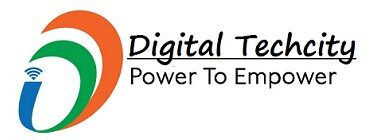Introduction
Imagine having the ability to foresee future trends, identify potential risks, and optimise strategies based on data-driven predictions. Well, thanks to the power of predictive analytics, this is not just a dream, but a reality that is revolutionising various industries.
But, what is it, really?
How much do we know about it till now?
How well can we use it for our own advantage?
In this article, we have shared a thoughtful explanation for each of these questions. Hopefully, it will be enough to help you out in your search for more information.
Predictive Analytics: An Introduction
In Layman’s terms, predictive analysis is a branch of data analysis that involves employing a bunch of current and historical information. This can help you make informed predictions and get more insights on what might happen in the future of your organisation.
It is almost like having a crystal ball that can help you anticipate various events and their sole likelihood of occurring. However, there’s a catch to it. In order to make these predictions, you will require two crucial ingredients –
- Big data
- Statistics
The former usually offers a vast ocean of information from more than one source that you can analyse to reveal trends and patterns. However, the latter, on the other hand, offers the tools or techniques that you might require to do the prior-mentioned tasks.
Doesn’t sound informational enough, right?
Wait, let us explain each of them more elaborately.
The Role of Statistics for the Growth of a Business
Statistics is like the backbone of predictive analytics. It allows us to draw insights from data, understand the uncertainty, and quantify the relationships between different variables. Think of it as the science of making sense of numbers and using it accordingly.
One of the fundamental statistical techniques used in predictive analytics is regression analysis. It helps us establish relationships between –
- A dependent variable (the outcome we want to predict) and
- Independent variables (the factors that influence the outcome)
For instance, if you’re working in a retail setting, you can use regression to predict any sort of future sales that your organisation might make. And it does so by analysing historical sales or earning data, marketing expenditure, and the other relevant factors.
Another powerful statistical method is time series analysis, which is perfect for dealing with the data you have collected over time. It helps us detect patterns, seasonality, and trends in time-dependent data, allowing us to make predictions based on historical patterns.
The Potential of Big Data in the Growth of a Business
The explosion of digital data in recent years has opened up unprecedented opportunities for predictive analytics. Big data refers to the massive volume, variety, and velocity of data generated from various sources such as social media, sensors, websites, and more.
Imagine this – every time you are browsing the internet, shopping online, or interacting on any social media application – you’re leaving behind a digital footprint. Such a massive amount of data, when analysed and collected, can reveal valuable insights about your preferences.
Now, when aggregated with data from millions of other individuals, this becomes a goldmine of information for businesses and organisations.
The Synergy between Big Data and Statistics
Statistics and big data are like two peas in a pod, working together to bring out the best in each other. The huge volume and variety of big data provide a rich source for statisticians to work their magic.
On the other hand, statistics help to extract meaningful patterns and trends from the massive data sets, revealing hidden insights that would have remained buried otherwise.
In the past, traditional statistical methods were constrained by the limitations of smaller data sets, and the insights they provided were limited.
But, the arrival of big data has transformed the landscape, allowing statisticians to work with more data points, leading to more accurate predictions and enhanced decision-making.
Real-Life Applications of PA Using Big Data and Statistics
Since the idea was introduced in the market, predictive analysis has been / is being employed in more than one aspect. Here’s what you need to know about them –
1: Healthcare
Predictive analytics has been a game-changer in healthcare.
By analysing patient data, symptoms, lifestyle choices, and genetic information, medical professionals can predict the likelihood of disease occurrence, enabling early intervention and personalised treatment plans.
2: Finance
In the financial sector, predictive analytics is widely used for credit risk assessment, fraud detection, and stock market forecasting.
By analysing vast amounts of financial information, institutions can identify potential risks and opportunities in real-time without suffering any constraints.
3: Retail
Ever wonder how online retailers like Amazon recommend products that match your preferences so accurately? That’s predictive analytics at play.
By analysing your browsing history, purchase behaviour, and other data, retailers will be able to personalise product recommendations to keep you coming back for more.
4: Manufacturing
Predictive analytics is transforming manufacturing by enabling predictive maintenance.
By analysing sensor data through equipment, manufacturers can predict when machines are likely to fail and schedule maintenance before any breakdown occurs. This will reduce a lot of your organisation’s downtime and operational costs.
5: Transportation
In the transportation industry, predictive analytics helps optimise routes, predict maintenance needs, and improve passenger safety. For example, airlines use predictive analytics to forecast demand and adjust ticket prices accordingly.
The Future of Predictive Analysis
The field of predictive analytics is evolving rapidly, and its future holds great promise. Advancements in AI and machine learning are expected to enhance the accuracy and scope of predictive models further.
Interdisciplinary collaborations between statisticians, data scientists, and domain experts will lead to more robust solutions and insights.
Moreover, as predictive analytics becomes more accessible and user-friendly, individuals and companies across various sectors will be empowered to make data-driven decisions. It’ll drive innovation and progress to a massive extent and offer several benefits.

